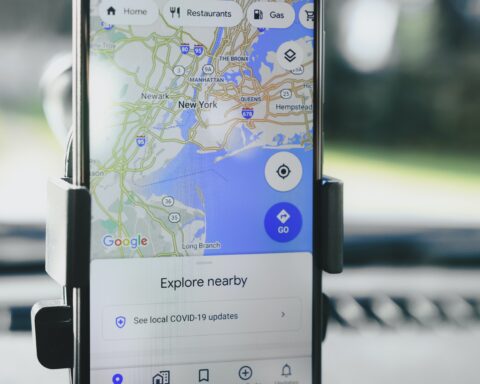Electric vehicles (EVs) are becoming increasingly popular among individuals and families alike, with over 1 million EVs on the road in the United States as of September 2020. As more people make the switch to EVs, there is a growing need for convenient and accessible charging infrastructure. In multi-family dwellings such as apartments and condominiums, this poses a unique challenge due to limited space and potential conflicts between residents.
However, many property owners and developers are recognizing the importance of providing EV charging stations for their tenants or buyers. Multi-family EV charging not only meets the demand for sustainable living but also increases property value and attracts environmentally conscious customers. This article will explore the trend of multi-family EV charging, its benefits for both property owners and residents, challenges faced during implementation, and examples of successful installations in various cities across the country.
The Need For Multi-Family EV Charging
The rise of electric vehicles (EVs) has been met with excitement and anticipation in recent years. With the potential to reduce greenhouse gas emissions and create a more sustainable future, EVs have become increasingly popular among environmentally-conscious consumers. However, this trend towards sustainability is not just limited to individual car owners; multi-family dwellings are also recognizing the need for EV charging infrastructure as part of their community impact.
As more people move into apartments or condominiums, the demand for convenient and accessible EV charging stations grows. This creates a unique challenge for property managers who must balance the needs of residents with the costs associated with installing charging equipment. Fortunately, there are government incentives available that can help offset these expenses and encourage more communities to invest in reliable EV charging solutions. By taking advantage of these programs, property managers can provide an essential service to their residents while promoting eco-friendly practices within their building.
Benefits For Property Owners And Residents
Cost savings and environmental impact are two major benefits of multi-family EV charging systems for property owners and residents. For property owners, offering EV charging stations can increase the value of their properties while reducing maintenance costs. Installing a charging system may require an initial investment, but it can attract more tenants who own electric vehicles (EVs) and generate additional revenue from station fees. In addition, installing EV chargers demonstrates the owner’s commitment to sustainable living which is becoming increasingly important among renters.
Residents also benefit from having access to on-site EV charging stations. With more people switching to EVs due to increasing environmental awareness, finding a convenient place to charge their cars becomes essential. On-site charging ensures that residents don’t have to travel far in search of public charging points or wait long periods for other users at busy locations. Moreover, by using renewable energy sources such as solar panels, these charging stations help reduce carbon emissions and contribute towards creating a cleaner environment.
In summary, cost savings and environmental impact are significant advantages offered by multi-family EV charging systems for both property owners and residents alike. By providing easy access to affordable and environmentally friendly power solutions, multi-family dwellings promote sustainability while improving quality of life for all involved parties.
Challenges In Implementation
Picture a large puzzle with many pieces. Each piece represents an obstacle that must be overcome to implement multi-family EV charging stations successfully. Cost considerations are one of the most significant challenges in implementation, especially for apartment buildings with limited budgets. Installing electric vehicle chargers requires investment in high-capacity electrical systems and hardware, such as transformers and distribution panels. On top of this, property owners may face additional costs like parking lot upgrades or rewiring existing electricity infrastructure.
Infrastructure limitations also pose a challenge to implementing multi-family EV charging stations effectively. Building managers need to consider factors like power supply capacity, location accessibility, and available space when choosing where to install these new facilities. Additionally, those who don’t own their properties might not have control over whether they can even install charging equipment on-site due to lease restrictions or landlord opposition. Despite these obstacles, it’s essential to continue finding ways to make multi-family EV charging more accessible because it supports sustainable living practices while reducing our carbon footprint.
Successful Installations In Various Cities
Despite the challenges in implementing a multi-family EV charging system, there have been successful installations in various cities. These installations have paved the way for more cost-effective options and advancements in charging infrastructure, making it easier for property owners to provide their residents with this sustainable living option.
One such success story is the installation of 60 Level-2 chargers at an apartment complex in Portland, Oregon. Using grant money from the state’s “Electric Vehicle Infrastructure Project,” the complex was able to install these chargers without any upfront costs or ongoing maintenance fees. The result has been increased resident satisfaction and reduced carbon emissions from transportation. Another example comes from Los Angeles, where a public-private partnership led to the installation of over 1000 chargers across multiple properties owned by the Housing Authority of the City of Los Angeles (HACLA). This project not only provided HACLA residents with access to EV charging but also created job opportunities for local residents during construction.
As technology continues to advance and demand for electric vehicles grows, we can expect even more innovative solutions to come forth that will make implementing multi-family EV charging systems more feasible than ever before. Cost-effective options like shared charging stations and smart-grid-enabled devices are already becoming available, while advancements in battery storage technology may soon allow properties to generate and store their own electricity on-site. With all these developments happening simultaneously, it is clear that multi-family EV charging is a trend here to stay – one that will bring benefits both environmentally and economically as time goes on.
The Future Of Multi-Family EV Charging
The future of multi-family EV charging is bright, as more and more people are switching to electric vehicles for their daily commute. To keep up with the growing demand, developers and building owners will need to invest in upgrading their EV charging infrastructure. This includes installing additional chargers and ensuring that they can handle higher power levels.
Technological advancements in EV charging are also on the horizon. Wireless charging technology is already being tested, which would allow drivers to simply park over a designated spot and have their car automatically charged without any cords or plugs. Additionally, fast-charging stations are becoming more widespread, allowing for quicker recharging times. As these technologies continue to develop, it will become even easier and more convenient for residents of multi-family buildings to own and charge their electric vehicles.
– Sub-list:
– With wireless charging technology, drivers no longer have to worry about finding an available charger or remembering to plug in.
– Fast-charging stations reduce the amount of time needed for a full charge, making owning an electric vehicle much more practical for everyday use.
– The installation of solar panels or other renewable energy sources can help offset electricity costs associated with operating multiple EV chargers.
In summary, the future looks promising for multi-family EV charging. Technological advancements promise increased convenience and faster recharging times while upgrades in infrastructure will ensure that sufficient numbers of chargers are available to meet rising demand from environmentally-conscious consumers who prioritize sustainable living options like electric cars.
Conclusion
Multi-family EV charging is a sustainable trend that has been gaining traction in recent years. Property owners are recognizing the need to provide charging stations for their residents who own electric vehicles, as they seek to attract environmentally conscious tenants and stay competitive in the market.
Despite challenges such as installation costs and limited space availability, successful implementations have been observed in various cities across the United States, with some even offering incentives to encourage property owners to install charging infrastructure. According to a report by the National Renewable Energy Laboratory, multi-unit dwellings represent approximately 20% of all households in the country, making it crucial to expand access to EV charging beyond single-family homes.
In conclusion, providing multi-family EV charging is an essential step towards achieving sustainability goals while accommodating the growing demand for electric vehicles. An interesting statistic reveals that by 2025, over 30 million electric vehicles will be on the road globally. This number highlights the urgency for property owners and policymakers to prioritize installing accessible and affordable charging infrastructure for both current and future EV drivers living in multi-unit buildings. Through collaboration between stakeholders, this trend can continue its upward trajectory toward a more sustainable future.





